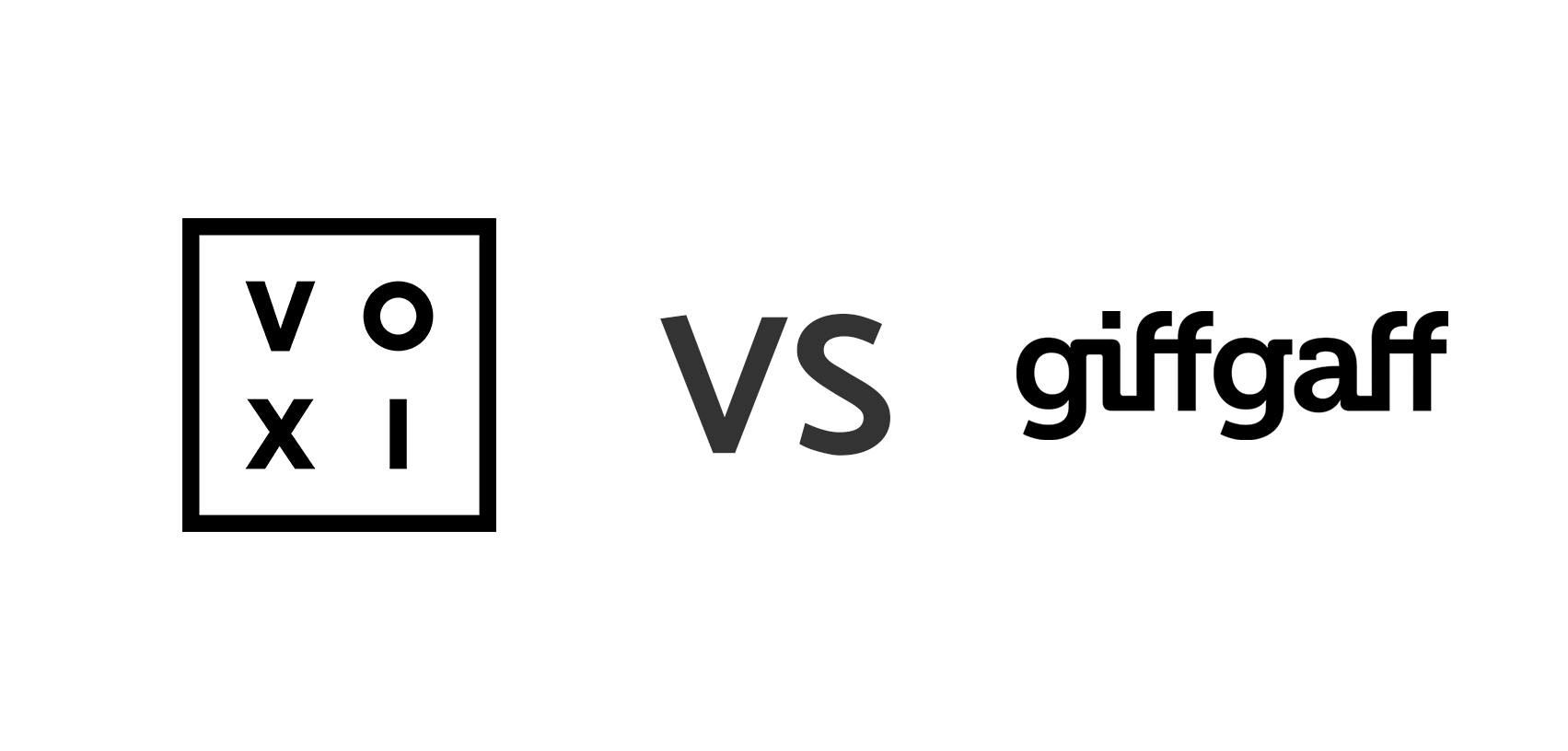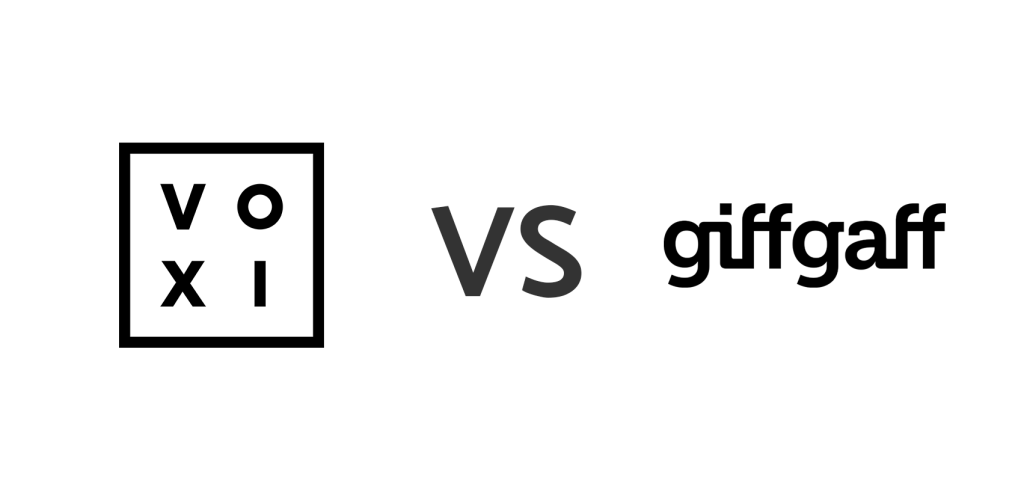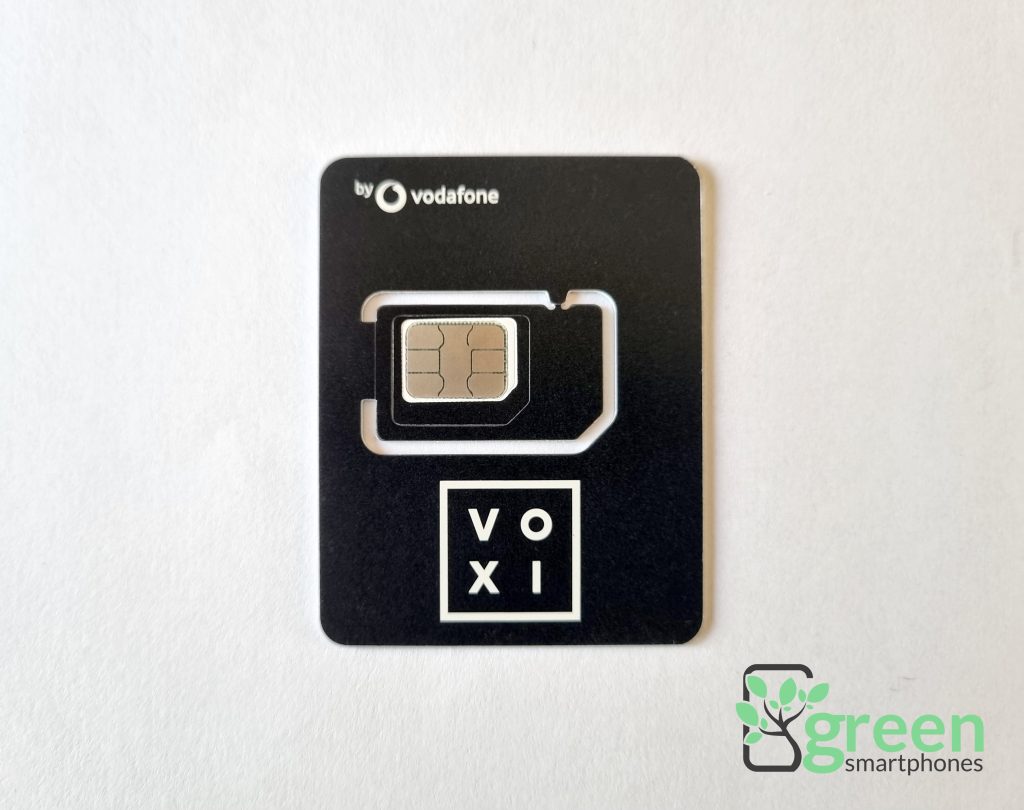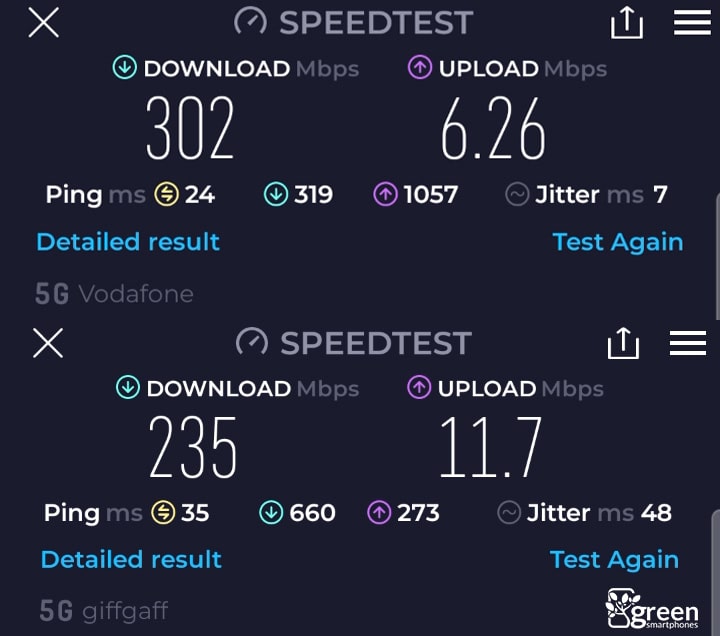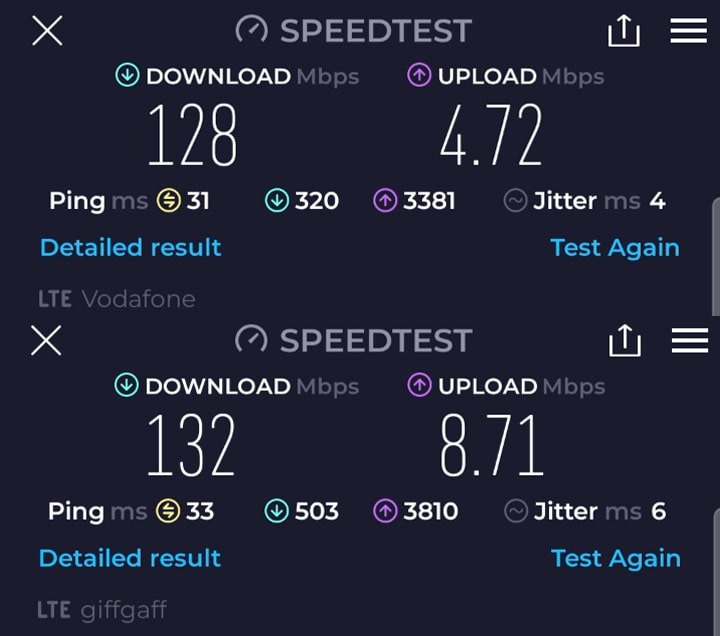Considering buying a SIM plan from either VOXI or giffgaff?
In this guide, we’ve compared VOXI and giffgaff, based on our experiences using each of their pay as you go SIMs.
We’ve assessed VOXI and giffgaff based on their speeds and coverage, customer service, value for money, and more, to see which is best.
Before we begin, if you’re searching for a new mobile plan, on any network, use our comparison site to find the cheapest pay monthly phone plans or SIM-only deals on the market right now.
Contents
- Overview
- Coverage and speeds
- Roaming allowances
- Value for money
- Customer service
- Verdict: should you join VOXI or giffgaff?
Overview
VOXI and giffgaff are mobile virtual network operators (MVNOs) that service the UK.
This means, rather than having their own 4G and 5G masts, they lease access from another network.
VOXI uses Vodafone, while giffgaff uses O2.
In fact, each of these two MVNOs is owned by their parent network. This is a good thing in our experience, as it usually means you’re less likely to have your traffic deprioritised, compared to a customer using an MVNO that is not owned by the parent network.
Both of these providers have a strong focus on pay as you go SIM deals, with no credit check required to get started.
Most of their plans come with a rolling monthly contract, but you can also buy pay monthly phone plans with both providers.
giffgaff has pay monthly SIMs too, on an 18 month contract, if you want to get a lower monthly cost.
Although both of these networks are quite basic options compared to some larger providers, VOXI does include unlimited social media usage and or music/video streaming on some of their plans, separate from your data limit, which can be quite useful.
We found that getting started with a VOXI or giffgaff pay as you go SIM was quite simple.
You can order a free SIM card with both providers, and add data to it later. Though, VOXI requires you use a British payment method when purchasing, making it a bit harder to get up and running with them if you’re new to the UK.
Coverage and speeds
When it comes to 5G performance, VOXI is generally a better choice than giffgaff.
They use the Vodafone network, which offers the second-fastest median 5G speeds in the UK, behind Three.
From our testing, VOXI has full access to the Vodafone network, with no speed caps, which is great – especially given that most Vodafone SIMs are limited to a 100 Mbps download speed.
O2 has the slowest median 5G speeds in the UK, although they (and giffgaff) perform very well in our area.
VOXI SIM plans show up as Vodafone on speedtest.net.
On 4G though, giffgaff does better than O2, especially when it comes to overall coverage, thanks to the strength of the O2 network.
O2 has the second-best 4G coverage in the UK, behind EE, meaning they’re a particularly good choice if you live in the countryside, or often travel there.
We saw good 4G speeds as well on both Vodafone and giffgaff from our testing.
However, we found that call quality in more remote or difficult locations, such as on trains and in the countryside, was a bit better using giffgaff compared to VOXI.
While VOXI’s 4G coverage is still good, and they offer fast speeds, giffgaff is better at the moment, and they have faster uploads.
Roaming allowances
giffgaff and VOXI are both quite restrictive when it comes to roaming. However, giffgaff is the better of the two providers.
As a VOXI customer, to use data, calls, or texts abroad, you have to buy one of their roaming passes, including in the EU.
These passes can be a bit expensive, especially over long trips, and there’s also a 20GB monthly fair usage limit, no matter how many roaming passes you buy.
giffgaff’s EU monthly roaming limit is just 5GB. However, this allowance is included free of charge – you don’t have to buy an add-on to roam, like you do with VOXI, which is good.
If you don’t mind paying more, we actually think VOXI is a better roaming option. If you go above 5GB per month with giffgaff, you’ll have to pay per megabyte of data used, which will be very expensive.
Beyond Europe though, both of these providers charge for every megabyte you download, or per call made.
So if you often travel to places like Turkey, India, Australia, or the US, you might be better off buying a more expensive SIM from a big four mobile network, instead of using VOXI or giffgaff.
Value for money
If you compare their pay as you go SIM deals against each other, you’ll normally find that VOXI and giffgaff have very similar monthly costs.
It can be hard to separate these two mobile networks when it comes to the prices they’re charging, although giffgaff is able to offer lower monthly costs on their pay monthly contracts.
You might find one of these networks offers better deals when you’re reading this, so it’s a good idea to compare current pricing on our SIM-only deals page.
The difference between the two providers is, VOXI includes unlimited social media usage on some of their plans, covering apps like Facebook, Snapchat, Instagram, and more.
And some of their tariffs even include data-free video streaming, on YouTube, Amazon Prime, Netflix, and others – though these plans do often cost more.
So, you might be able to get away with a lower data limit with VOXI, especially if most of your data usage comes from social media.
When it comes to pay monthly phone plans, it’s also quite close between the two networks. Below, we’ve included some of their best deals on Apple, Samsung, and Google phones at the moment, so you can compare their pricing.
Both providers actually have quite a good number of handsets to choose from, including cheap options, although VOXI’s range is a bit bigger at the moment.
Also, giffgaff phone contracts tend to be a bit more flexible.
You can vary the contract length from 12 up to 36 months, or choose to pay upfront for the phone if you prefer. Plus, you can vary your upfront cost, to lower your monthly bill.
VOXI allows you to change the contract length, but not any other aspect of the tariff at the moment.
Customer service
VOXI’s customer service is not the best, even compared to other cheap mobile networks.
They use the same support team as Vodafone, which is good, because they’re UK-based, and helpful when you get in touch, in our experience.
The problem is, VOXI is heavily reliant on live chat. And before speaking with a real person, you have to go through a chatbot, which can be a bit of a hassle.
When you go to their support page, VOXI tries to push their automated answers and help documents, but they’re not all that helpful in our opinion.
With giffgaff, they also try to push you towards their knowledge base or their support forum when you need help, which is not great.
Like VOXI, they have no phone number you can call, and rely on live chat instead if you want to get in touch.
They don’t have such a focus on chatbots, which we think is good – if you need to speak with a human, you can do this, although the live chat queue can be a bit long when it’s busy.
So ultimately, we think VOXI and giffgaff both have about average customer service, which is sort of to be expected given the prices they’re charging.
They could each open a phone line, but they would have to increase their prices if they did this.
If you want better customer service at a similar price point, it might be worth checking out Smarty – a Three MVNO.
Verdict: should you join VOXI or giffgaff?
Whether you should choose VOXI or giffgaff depends a bit on what you’re looking for.
If you’re most concerned about getting good coverage, especially in remote areas, we think giffgaff is a better choice than VOXI at the moment.
They also have inclusive roaming, up to 5GB, and allow you to get a cheaper SIM on a 18-month contract.
However, VOXI can offer better value than giffgaff, especially if you take advantage of their unlimited social media allowance. Plus, they offer faster average 5G speeds.
If you have any questions about the differences between these two mobile networks, leave us a comment below, and we’ll get back to you as soon as we can.
About the author

Tom is the founder of Green Smartphones. You’ll find him writing about phones on the Green Smartphones blog, or talking about SIM deals and mobile networks on our YouTube channel. He’s the Android expert on the team – currently using a Google Pixel 9, recently upgrading from a very long-suffering Note 20 Ultra. When he’s not working on Green Smartphones, you’ll find him playing football or hiking.


